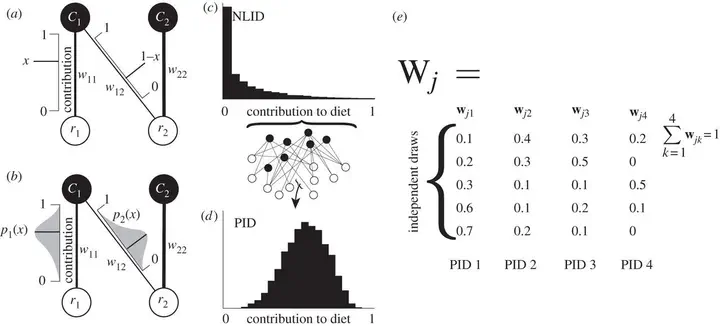Probabilistic patterns of interaction: the effects of link-strength variability on food web structure

Abstract
Patterns of species interactions affect the dynamics of food webs. An important component of species interactions that is rarely considered with respect to food webs is the strengths of interactions, which may affect both structure and dynamics. In natural systems, these strengths are variable, and can be quantified as probability distributions. We examined how variation in strengths of interactions can be described hierarchically, and how this variation impacts the structure of species interactions in predator–prey networks, both of which are important components of ecological food webs. The stable isotope ratios of predator and prey species may be particularly useful for quantifying this variability, and we show how these data can be used to build probabilistic predator–prey networks. Moreover, the distribution of variation in strengths among interactions can be estimated from a limited number of observations. This distribution informs network structure, especially the key role of dietary specialization, which may be useful for predicting structural properties in systems that are difficult to observe. Finally, using three mammalian predator–prey networks (two African and one Canadian) quantified from stable isotope data, we show that exclusion of link-strength variability results in biased estimates of nestedness and modularity within food webs, whereas the inclusion of body size constraints only marginally increases the predictive accuracy of the isotope-based network. We find that modularity is the consequence of strong link-strengths in both African systems, while nestedness is not significantly present in any of the three predator–prey networks.